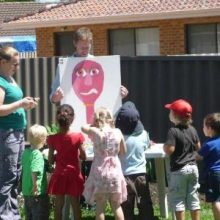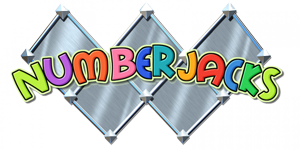Numberjacks
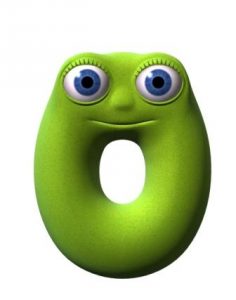
There are 10 superhero Numberjacks, each with particular characteristics and different strengths. Click here to find out more.
The Meenies
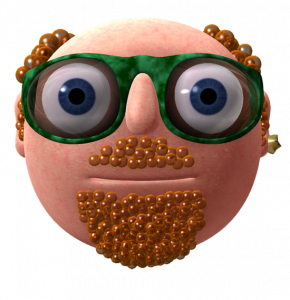 There are 5 Meanies who create all kinds of mathematical problems that the Numberjacks have to put right. Click here to find out more.
There are 5 Meanies who create all kinds of mathematical problems that the Numberjacks have to put right. Click here to find out more.
Learning
We hope that every Numberjacks experience will combine entertainment and education. We want young children enjoy early maths, problem solving and thinking skills, get off to a good start at school, and have a cheerful and positive attitude towards maths that will last them all their lives. The learning in Numberjacks covers a wide range of topics, including numbers, counting, shape, measurement, movement, position, pattern and problem solving. Click here to find out more.
Agents’ Pictures
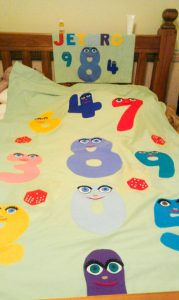
Night, night. Sleep tight!
We’ve been sent this wonderful photograph by a Numberjacks fan in Australia – a busy grandmother has made sure that he dreams of Numberjacks!
Numberjacks Fans
We had a lovely email from a fan of Numberjacks in New Zealand. This is what they said:
“My son is 2 1/2 years old and a great fan of the Numberjacks. When he was 2 he could count to 10. Now at 2 1/2 years old, he can read the numbers to 9 (for 10 he says 1 and 0!). We mix up the numbers and he recognises every number. A lot of people were surprised and impressed but I’ve recently realised that its because of the Numberjacks. The Numberjacks are easily identified because they are clearly visible by number/name. I’d like to thank you for advancing my son at such an early age and keep up the great work.”
The Numberjacks Characters
3, 4, 5 and 6 are the principle characters, and appear in every episode.



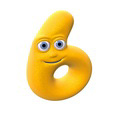
3 is busy, lively, a bit “Me me me!” but growing up. Slightly odd and eccentric, noisy, fun and full of herself. Very keen to be seen as one of the bigger numbers – “I can do it!” – but not quite ready for it yet. A wildly ambitious jumper, 3 has a collection of beautiful things. She doesn’t go out on missions in the earlier episodes, but graduates to doing so later. She is the principle operator of the Brain Gain machine.
4 is a regular sort of number – nice, steady, quite grown up. He’s four-square, steady, logical, measured. Not hugely self-confident, tries not to panic. “I’m not sure, but I’ll try a bit more.” Still happiest at home, not entirely happy as a jumper, but OK as long as things don’t go wrong. 4 is the mechanic of the Numberjacks, and likes fixing things. He likes trains and playing with the Bloop Ball. He is the main screen operator.
5 is definitely grown up, she’s perceptive, sorts things – quite cool, creative, artistic. Likes looking after the smaller numbers some of the time. Loves jumping, does it with grace and style, outgoing. “I’m fine!” She’s a good and cool singer, has a good fashion sense (for someone who never wears clothes). In each episode 5 speculates what else might go wrong, which we see as a 2-d animation.
6 is a “bigger” number, playing tricks, is good fun. Quite physical, he’s a cool jumper, sometimes a bit too flash for his own good. He tends to be the leader of the Numberjacks, though perhaps not as bright as Five. “Did the trick!” He loves cars. 6 usually decides who will go on the Mission.
The Other Numberjacks
0, 1 and 2 are the “younger sibling” Numberjacks. The bigger Numberjacks look after them.
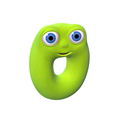

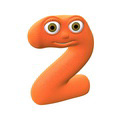
0 is the baby of the numbers, and doesn’t do much. He’s a bit special, because he can turn things into nothing, and can line up to make bigger numbers like 10 and 100. He can hardly jump at all, and often falls asleep. He can make things disappear and can make 10 together with 1.
1 is nice, a bit self-centred and rather immature. She doesn’t jump very much and is still very much at the centre of her own universe. Well-meaning but sometimes the source of the problems, she can make 10 with 0.
2 quickly flips from one state to the opposite, is busily into things and has a touch of “terrible twos”. Active and changeable, he sometimes wants to be one of the “big numbers” but is sometimes still very babyish.
7, 8, and 9 are seen from time to time, and give us “older sibling” relationships and storylines. They live in another part of the sofa.

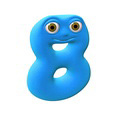

7 is enthusiastic, slightly “new age”, colourful and bright. She’s a great painter, especially of the seven colours of the rainbow. She sings well, is energetic, creative and busy.
8 is a good jumper, and has a special bond with 4, being looked up to as a sort of big brother. 8 is cheerful, rounded, earthy, sporty, and game.
9 is the “biggest” Numberjack. She’s a touch motherly, quite sensible, grown up and neat. She has a particular fondness for 3. She is a good organizer, and calm in a crisis.
Going Global
 Numberjacks is now on air in more than forty countries around the world, transmitting in Hindi, Spanish, Portuguese, Polish, Finnish, Swedish, Danish, Norwegian, and Italian. In South America the Numberjacks are Os Supernumeros.
Numberjacks is now on air in more than forty countries around the world, transmitting in Hindi, Spanish, Portuguese, Polish, Finnish, Swedish, Danish, Norwegian, and Italian. In South America the Numberjacks are Os Supernumeros.
The Numberjacks can also be seen in Malta, South Korea, New Zealand and parts of Africa. Look out for Numberjacks if you are going on holiday!
Numberjacks Stories
Numberjacks isn’t just available as a television series or YouTube or on DVD, there are also 42 specially made radio episodes. Each one of these episodes features the Numberjacks encountering a problem related to a traditional story or nursery rhyme, and were made for CBeebies Radio and broadcast on BBC Radio 7. The Numberjacks magazine also includes these audio stories, bringing them to life on the page.
All of the episodes are already available on YouTube www.youtube.com .
The Numberjacks Audio Stories are also available to be streamed on Spotify, Apple Music & More! Thanks for watching! Subscribe Kids!
Spotify: NumberjacksSpotify
Google Play: NumberjacksGooglePlay
Amazon: NumberjacksAmazon
iTunes Music: NumberjacksiTunes
Agents’ Pictures
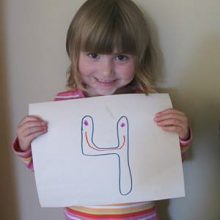
This is a Numberjacks fan from Canada whose favourite Numberjack is Number 4. What a wonderful picture!
We like to see pictures of you enjoying Numberjacks. Please send them to us at feedback@numberjacks.co.uk. We especially like to see how children are playing with Numberjacks and to hear about what they are learning and how they are having fun.
